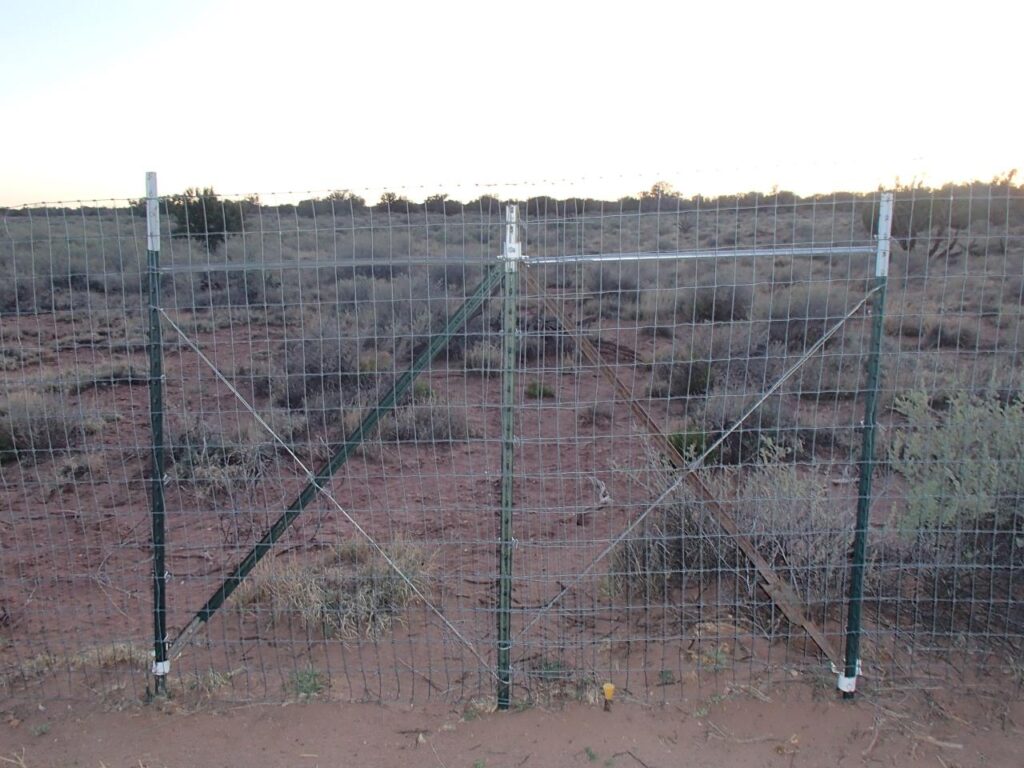
Great for corners, intervals in long straight runs, changes in elevation, at gate openings, just about any other bracing you can think of.
You normally won’t need the wire tensioners from the top of the outside posts to the bottom of the center one.
Important Information:
Privacy Policy, Terms Of Use,
Before You Buy
Easy T-Post Bracing Anchor
After several miles of fence, fifteen years, and many attempts to find a good solution, we discovered something that works really, really well, and it’s not expensive.
improveddevices.com
making things more useful
We’d be glad to help you figure out which bracing anchors you need for your project.
The retail price for the simplest bracing anchor is $9.21 and $15.13 for the most complicated. Others fall in between.
Easy T-Post Bracing Anchors
QUICK, SECURE, INEXPENSIVE
There’s a brace configuration to fit any fencing situation: right corner, left corner, straight run, even double corners. This is how t-post bracing should be.
When braced properly a fence made of all t-posts will do the job and last just as long as anchoring posts in cement. That saves time and money.
If you’ve put up t-post fence before, you probably already know how to set up good bracing for corners and at intervals of long runs or changes in elevation.
The following is just to orient you to the naming used in describing the Easy T-Post Bracing Anchors, from now on just called bracing anchors or anchors.
Configurations of Easy T-Post Bracing Anchors
What are the parts which make up our Bracing Anchors?
The CORE is the vertical piece with two slots in the front and two bolts, one on each side. The WINGS are attached at 90 degrees to the CORE. (Take a look at the photos on the right.)
Bracing anchors are available with one, two, three, or even four WINGS welded to the CORE, depending on what’s needed for bracing. By far the most useful and common versions are:
- one wing right and left
- two wing straight, right, and left.
The CORE and WING(S) together make a Bracing Anchor.
Setting up corner and interval bracing
To properly brace a corner or at an interval in a long run you’ll need:
- three t-posts,
- four braces,
- four one wing Bracing Anchors and
- one two wing Bracing Anchor.
Steps:
- Put three t-posts in the ground equally separated by three to four feet. One is in the center and one on each side. If the ground is super hard-pack or rock you’ll have better luck if you pre-drill a one inch diameter hole for each post.
- Use TWO one wing Bracing Anchors on the inside of each of the outside t-posts, one at the bottom and one at the top.
- Use ONE two wing Bracing Anchor at the top of the center t-post.
If the two wing Bracing Anchor is for interval bracing of a long straight run of fence, get the one with the wings straight across from each other. If it’s for corner bracing, get the one with wings which are at 90 degrees to one another. There are two versions – right and left. See the photos on the right.
Figuring out what you need
The company or person doing your fencing can help you. We’re happy to help as well. contact us
Usual way to purchase Easy T-Post Bracing Anchors
Bracing Anchors are usually purchased in a set of four one wings and one two wing, called a basic bracing KIT.
This is what it takes for bracing t-posts at intervals in a straight line run or for corners.
However, you can purchase individual Bracing Anchors, if that suits your need better.
General information about T-POSTS
T-Posts come in three different sizes, believe it or not. By far the most common is the medium size. It’s what almost every store sells. You can see that dimensions A and B for both the 1.25 lbs./ft. and the 1.33 lbs./ft. are very close. Easy T-Post Bracing Anchors will work with both the medium and heavy weight versions but NOT the lightweight version.
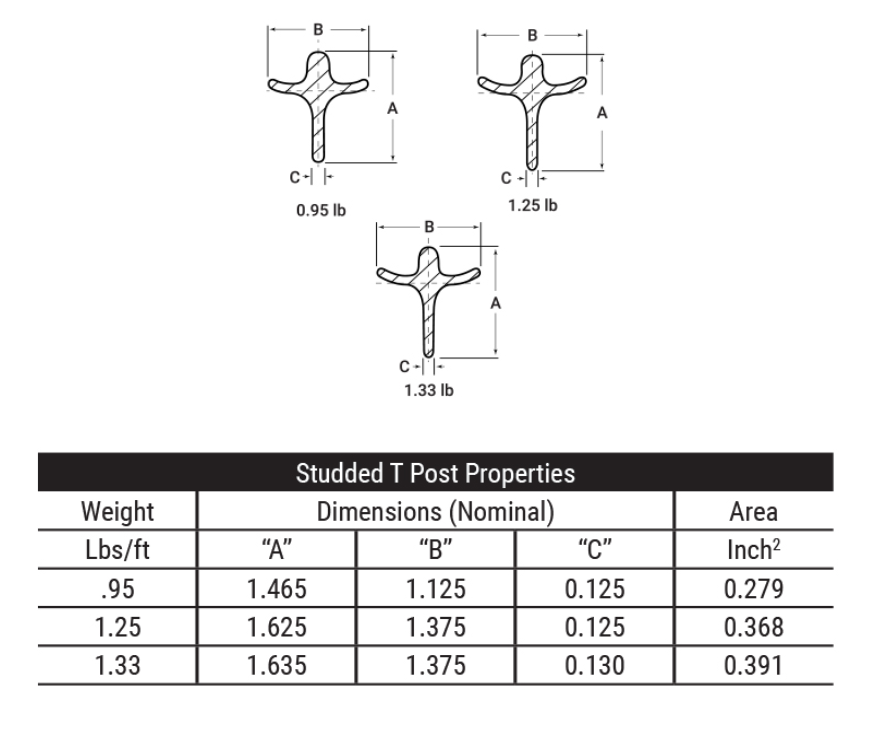
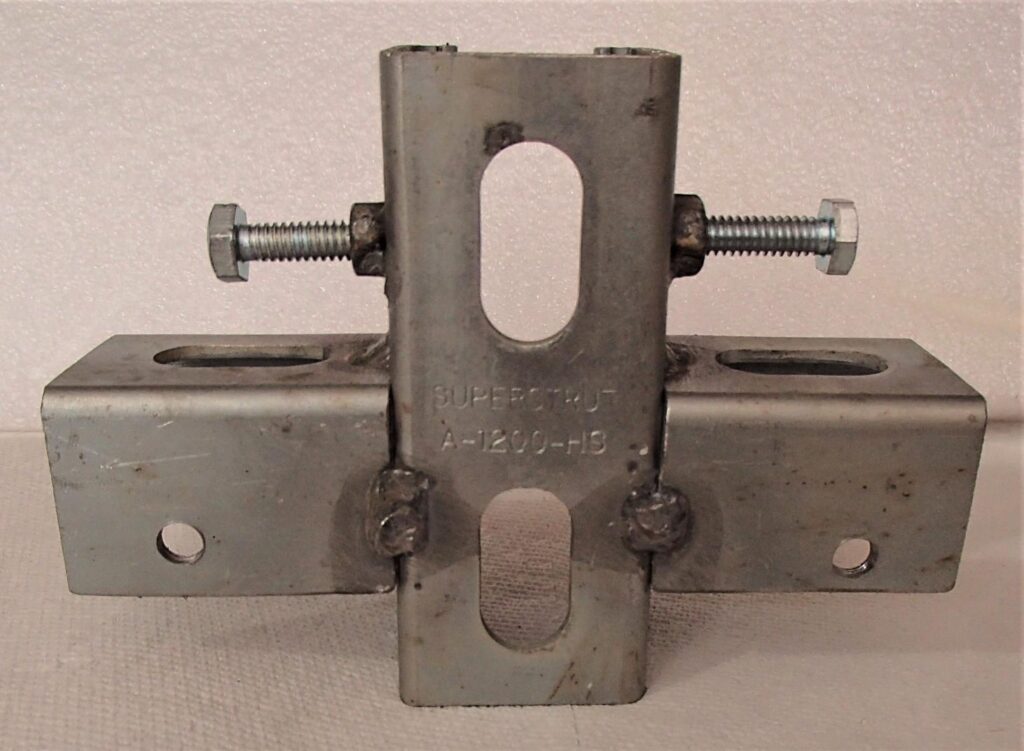
This is a straight-line two wing Easy T-Post Bracing Anchor, showing the two slots through which fit two knobs on the front or flat face of the t-post. This helps hold the anchor securely at the desired height.
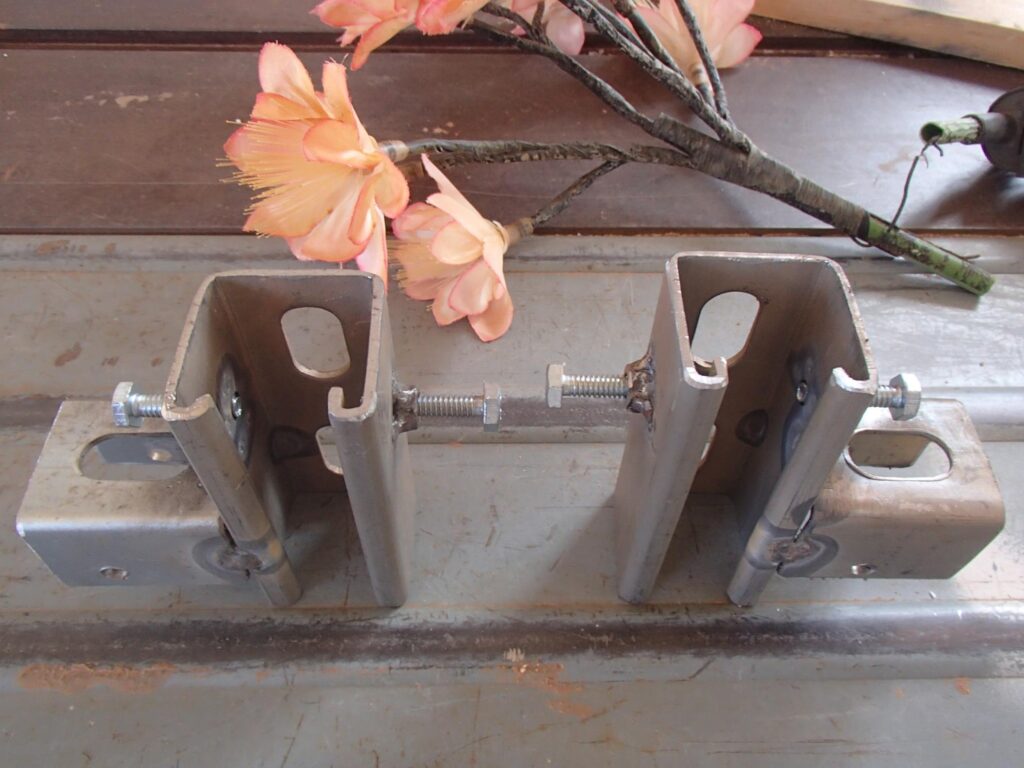
One wing bracing anchor above, back view, “right” on the right, “left” on the left. Right and left are designated from the back of the t-post, the spine or leg of the t-post.
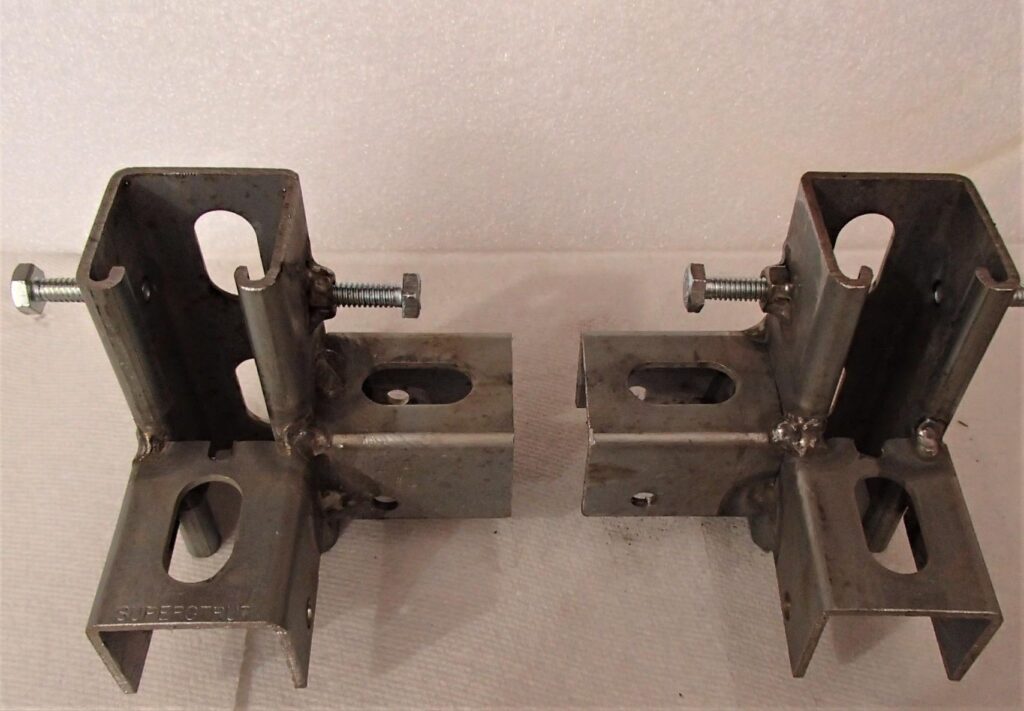
Two wing bracing anchors for fencing corners, “right” on the right, “left” on the left.
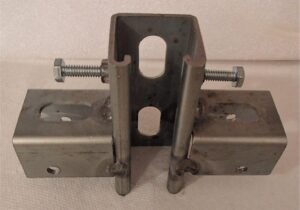
This is a “straight” two wing bracing anchor for interval bracing or for changes in elevation.

This is a three wing Bracing Anchor. I’m sure you’ve figured out by now how this gets used. It’s where three fence lines come together in a common corner. It’s not a frequently occuring situation but it’s an option.
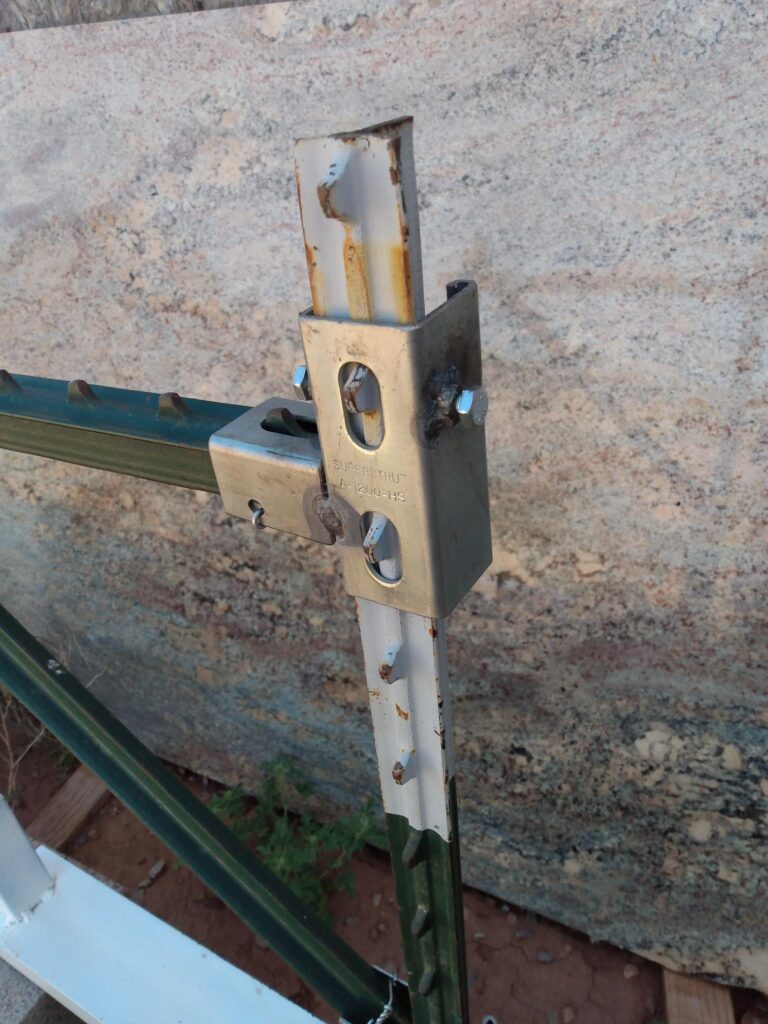
EASY T-POST BRACING ANCHOR
a short story
We’ve built a lot of fence using t-posts. Once we moved onto the property and got goats, we needed someplace safe for them. There are a lot of coyotes around here and five foot non-climb seemed like a good way to protect them.
Early on it was clear that bracing the t-posts was a pain. You can use wire wrapped around the top of a brace and the t-post, but it’s not very clean, precise, or secure over time.
T-posts are made of hard material and with some difficulty you can drill a hole in the post and use a bolt to hook on a piece of angle iron to give a brace a more secure surface to push against. That’s better than the wire at least, but still not very good and certainly not easy. And, it takes a lot of time.
Then we had to build a fence across the entire west side of our property. It’s not a real long distance, just a quarter of a mile. But with the number of t-posts it was going to take as well as the changes in elevation at various places on the property, drilling holes in t-posts was going to take more time, energy, and frustration than I was willing to tolerate.
Along came a round metal collar with angle iron wings welded to each side of the back of it and a bolt in the front which would tighten into the desired space between the knobs on the t-post. It worked quite well and certainly much better than anything we tried before. But it still wasn’t as easy as we wanted. (It’s what used on the t-posts showing interval bracing in the first picture on this page.)
Finally we realized we could eliminate the bolt by just having a hole in the front of a rectangular metal collar which would slip easily over the t-post and could be positioned at the desired height by putting the selected bump on the t-post through the hole.
This rectangular collar could be held securely in place using a stabilizing block fitting between the backside of the t-post and the inside back of the collar. A couple of screws hold it in place. It worked quite well, but wobbled a little.
STOP RIGHT HERE! We’ve developed an even better bracing anchor. What we are offering now is the most simple and secure anchor we’ve ever tried, bar none. Easy to put on. Easy to secure, with no wobble. Holds the bracing securely.
I hope you’ll give it a try.
Thank you.
The first two photos below are of a previous version of The Easy T-Post Bracing Anchors. They worked well, but they had a slight wobble, nothing like the solid fit of the current version.
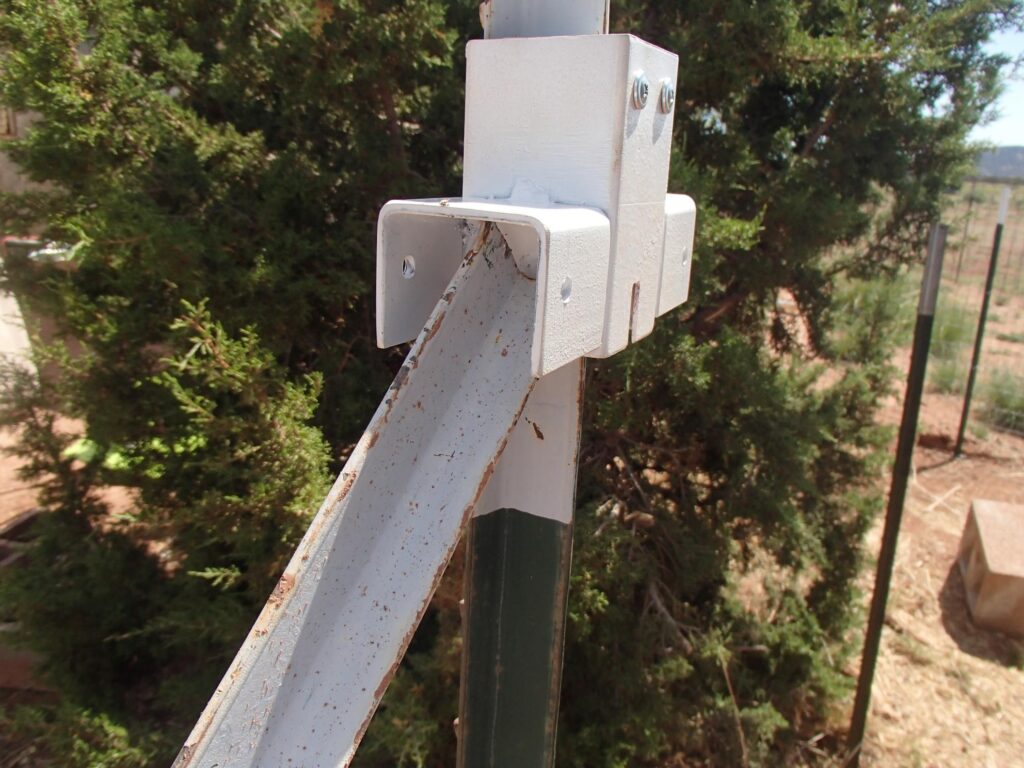
A diagonal brace with the upper end in place in the bracing anchor.
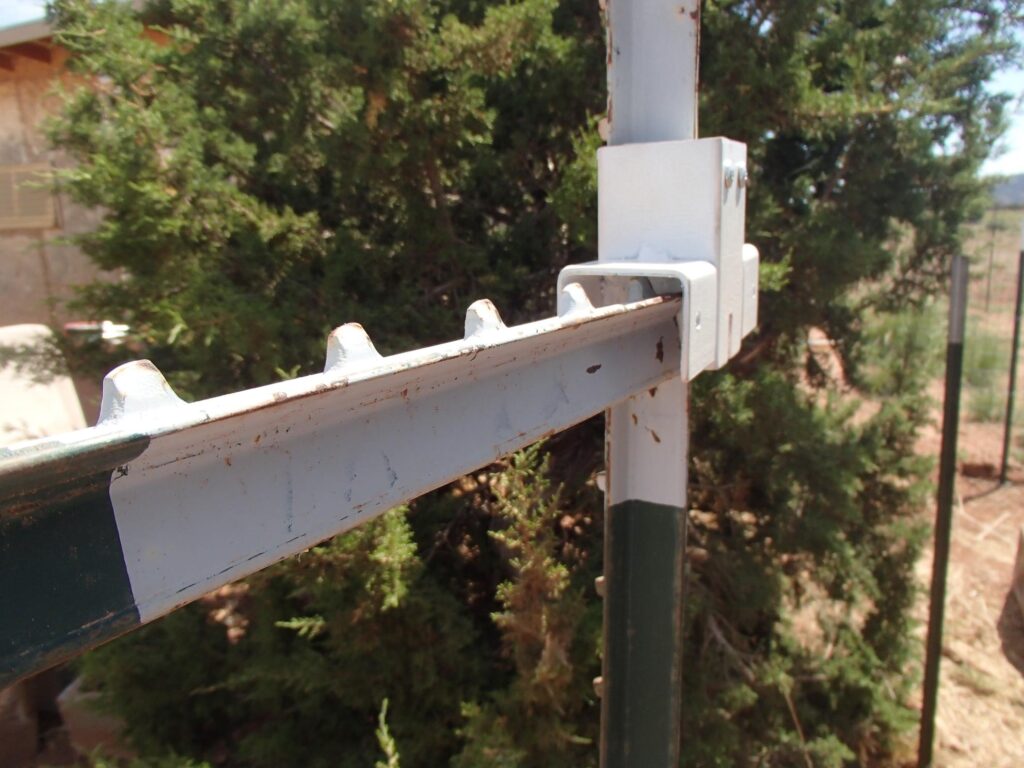
A horizontal brace inserted up under the wing of the Bracing Anchor.
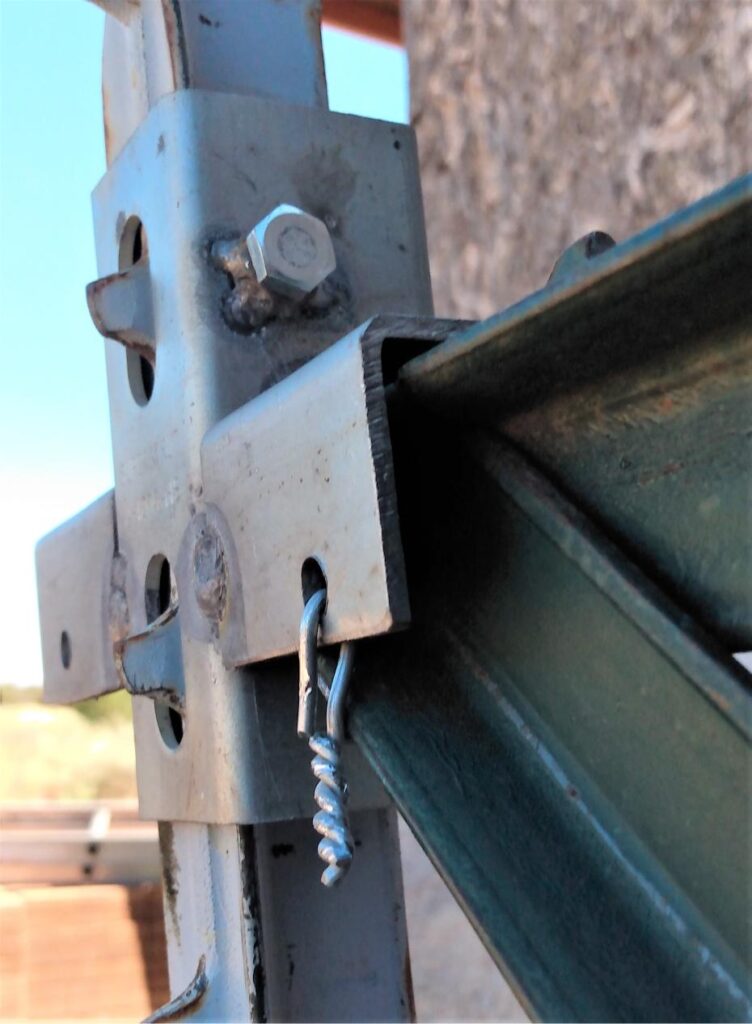
The picture above shows both a horizontal and a diagonal brace wired into a single wing of our current model of ET-PBA.